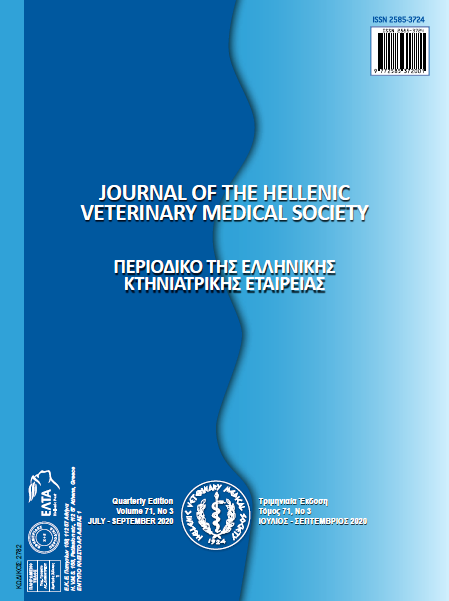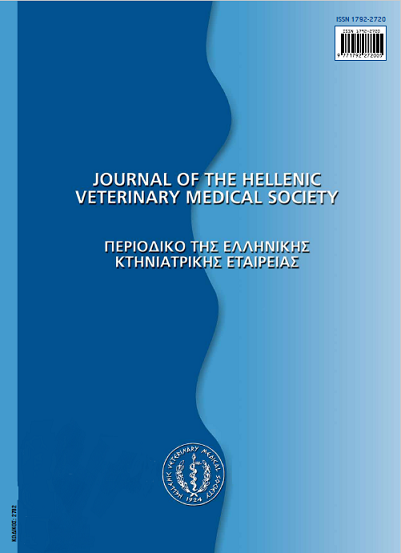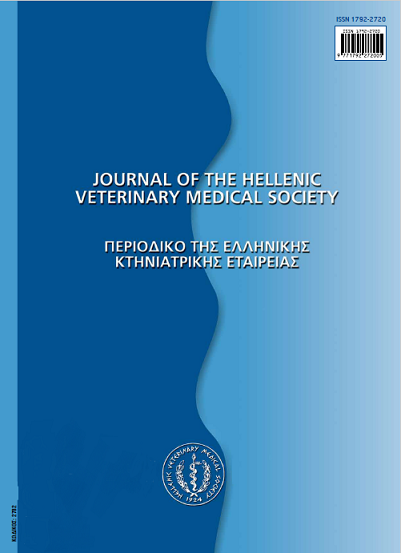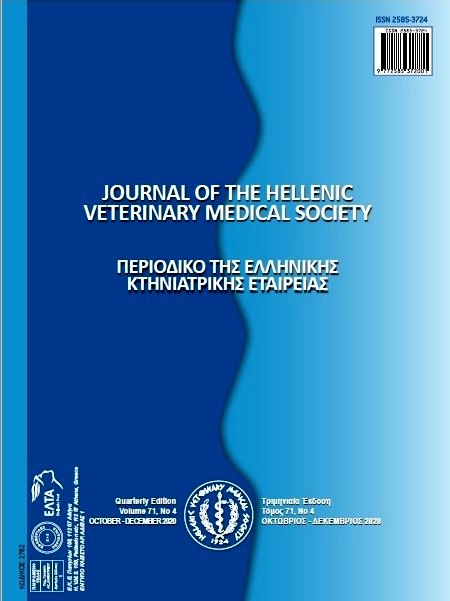Neosporosis and toxoplasmosis are two prevalent and important protozoses in dairy cows in small farms from Thessaly, Central Greece

Abstract
Neosporosis and toxoplasmosis are two significant protozoan parasitoses that can cause infertility and abortions in dairy cows worldwide. Those parasites, in contrary of other coccidia, are adapted to infect hosts by several routes of transmission. These include the consumption of sporulated cysts that have contaminated the environment, transplacental infection and accidental consumption of row meat infected with bradyzoites. Infertility, abortions, neonatal mortality and other clinical symptoms in cattle in both parasitoses can cause severe financial losses, especially when these diseases acquire an endemic or epidemic manner. The aim of this study was to report the prevalence of neosporosis and toxoplasmosis in dairy cattle as detected by ELISA technique, under the correlation with the age of infected animals. Blood samples were collected by venipuncture of the tail vein of 627 Holstein–Friesian dairy cows raised in 7 small farms (ranging from 55 the smaller to 137 the larger farm) from the region of Thessaly, central Greece. All farms have recorded a variety of infertility problems in the past. Animals were separated in three age groups; under 3 years old, between 3 and 6 years and over 6 years old. In a total of 627 cows from which the samples were taken and examined, 131 (20.89 %) of them were found positive for N. caninum while 51 (8.13 %) were positive for T. gondii. The prevalence in the three different age groups was recorded at 16.36%, 23.51% and 26.17% respectively for neosporosis and in the same age groups it was 5.20%, 9.16% and 13.08% respectively for toxoplasmosis. From the above results it becomes clear that preventative measures should be suggested to and adapted by the farmers, in order to decrease their financial losses.
Article Details
- How to Cite
-
LEFKADITIS, M., EVAGELOPOULOU, G., SOSSIDOU, A., & SPANOUDIS, K. (2020). Neosporosis and toxoplasmosis are two prevalent and important protozoses in dairy cows in small farms from Thessaly, Central Greece. Journal of the Hellenic Veterinary Medical Society, 71(3), 2357–2362. https://doi.org/10.12681/jhvms.25097
- Issue
- Vol. 71 No. 3 (2020)
- Section
- Research Articles

This work is licensed under a Creative Commons Attribution-NonCommercial 4.0 International License.
Authors who publish with this journal agree to the following terms:
· Authors retain copyright and grant the journal right of first publication with the work simultaneously licensed under a Creative Commons Attribution Non-Commercial License that allows others to share the work with an acknowledgement of the work's authorship and initial publication in this journal.
· Authors are able to enter into separate, additional contractual arrangements for the non-exclusive distribution of the journal's published version of the work (e.g. post it to an institutional repository or publish it in a book), with an acknowledgement of its initial publication in this journal.
· Authors are permitted and encouraged to post their work online (preferably in institutional repositories or on their website) prior to and during the submission process, as it can lead to productive exchanges, as well as earlier and greater citation of published work.





